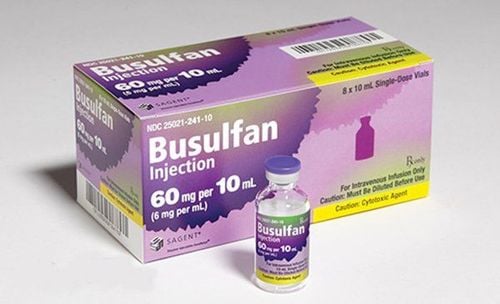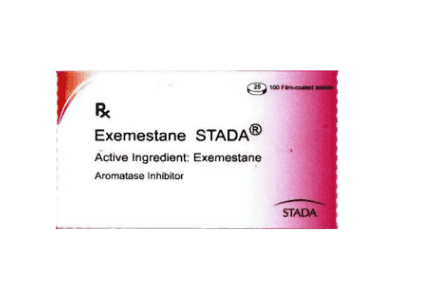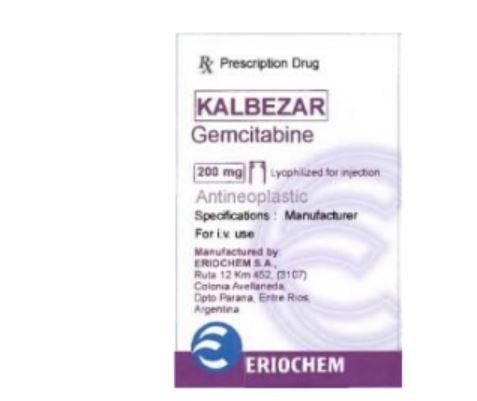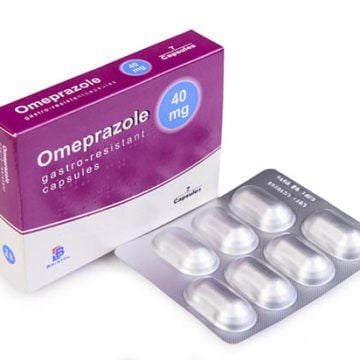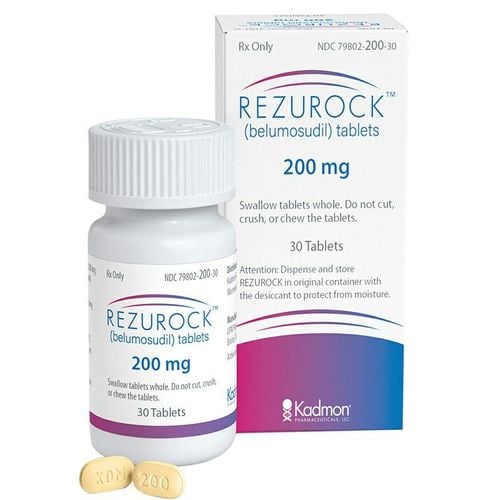This is an automatically translated article.
UracilSBK 500 is a prescription medicine used in the treatment of certain cancers. So what is the use of UracilSBK 500 and how to use this drug?1. Uses of UracilSBK 500
UracilSBK 500 drug is prepared as an injection solution with the main ingredient in each 10ml of drug solution is Fluorouracil 500mg.Fluorouracil is a pyrimidine-resistant cytostatic antineoplastic drug. When entering the body, Fluorouracil will convert to 5-fluoro-2-deoxyuridine 5'monophosphate (5-FdUMP). This substance will compete with deoxyuridine monophosphate (dUMP), so it inhibits thymidylate synthetase, causing a lack of thymidine needed for DNA synthesis, thereby causing cancer cells to be destroyed.
Drug UracilSBK 500 is indicated in the following cases:
Carcinoma colon. Rectal carcinoma. Breast Carcinoma. Gastric carcinoma. Ovarian carcinoma. Cervical carcinoma. Bladder carcinoma. Liver Carcinoma. Pancreatic carcinoma. Esophageal cancer Head and neck cancer. Bile duct cancer. Renal carcinoma. UracilSBK 500 is contraindicated in the following cases:
People with hypersensitivity to any of the ingredients of the drug. Severe changes in the number of blood cells. Renal failure, severe liver failure. Zona, chicken pox. Stomatitis, mouth ulcers. Digestive ulcers. Pseudomembranous enterocolitis. Pregnant and lactating women. Malnourished patients. Bone marrow failure. Severe infections. People with dihydroxypyrimidine dehydrogenase (DPD) deficiency.
2. Dosage and how to use UracilSBK 500
How to use UracilSBK 500:Notes when using the drug: UracilSBK 500 is used by intravenous injection or intravenous infusion, the route is preferred because it is less toxic. Fluorouracil in the drug UracilSBK 500 will cause irritation when in contact with the skin and mucous membranes. Only medical personnel trained in the use of cytotoxic drugs are allowed to open ampoules, pregnant women should avoid this operation. When preparing solutions, staff must conduct in a separate place, dispensing operations are done on a washable tray or on disposable blotting paper, with a plastic bottom. Eye protection, disposable medical gloves, a mask, and a disposable gown should be worn. Syringe and infusion set must be assembled carefully to avoid leakage. When completing work, medical staff must clean all surfaces in contact with the drug (including countertops, floors), and wash their faces and hands. The combination of UracilSBK 500 with radiation has good efficacy in some types of metastatic lung lesions and has analgesic effect in cases of recurrence that cannot be operated on. Contact with UracilSBK 500 and treatment: If UracilSBK 500 gets into eyes: You need to immediately wash with plenty of water and quickly use medical measures. If Uracil SBK 500 comes into contact with the skin: You need to wash the skin thoroughly with soapy water, immediately remove contaminated clothing. If inhaled or swallowed UracilSBK 500: Need to use immediate treatment measures. How to dispose of waste: Sharp objects must be placed in an appropriate receptacle. Waste syringe solutions, should be blotted with cotton and placed in double sealed polyethylene bags. All disposable instruments must be placed in a flexible plastic bag. All waste should be incinerated with hospital waste. Dosage of UracilSBK 500:
Dosage of UracilSBK 500 is usually calculated by the doctor based on the patient's body weight. If the patient is obese, or has gained weight due to edema ascites or other forms of fluid retention, the physician will calculate the ideal weight. The dose of UracilSBK 500 below can be reduced by 1/3 or 1/2 if the patient's condition is poor, after major surgery (within 30 days), or bone marrow failure (causing anemia, leukopenia). platelet count, thrombocytopenia), patients with liver failure, renal failure.
Initial dose: IV infusion at a dose of 15mg/kg/day, not more than 1g for 1 infusion. The drug is dissolved in 500ml of 5% dextrose solution or 500ml of 0.9% sodium chloride solution. Infusion rate 40 drops/min over 4 hours or infusion over 30 - 60 minutes or continuous infusion over 24 hours. This daily dose of UracilSBK 500 will be administered consecutively until toxicity occurs or until the total dose is 12-15 g, which is 1 course of treatment. Some patients are used up to 30g with a maximum dose of 1g/day. The daily dose of UracilSBK 500 should not exceed 1g. The interval between 2 treatments should be a break of 4-6 weeks. Intravenous injection at a dose of 12mg/kg/day for 3 consecutive days. If toxicity does not appear, the doctor may prescribe 6mg/kg/day on the 5th, 7th and 9th days. If intoxication occurs, the drug should be stopped until signs of symptoms appear. Withdrawal poisoning before using the next dose. The maintenance dose is from 5-15mg/kg, once a week intravenously. Recently, doctors often use a dose of 15mg/kg intravenously, once a week for the entire course of treatment. With this regimen, no starting dose is required. Infusion into regional arteries: Continuous infusion of UracilSBK 500 into the artery feeding the tumor will give better results when using the systemic route through intravenous infusion, and at the same time reduce toxicity. The usual dose is 5 - 7.5 mg/kg/day.
3. Side effects of the drug UracilSBK 500
In the process of using the drug UracilSBK 500, you may encounter some side effects of the drug, including:Bone marrow failure. Leukopenia . Anemia. Digestive disorders. Gastrointestinal ulcers. Skin inflammation. Medal . Itchy. Liver failure. CKD. If you experience any side effects of the drug UracilSBK 500, immediately notify the treating doctor for timely treatment.
4. Interaction of the drug UracilSBK 500 with other drugs
UracilSBK 500 may interact with the following drugs, when used together, including:Ca folinate. Folinic Acid Chlordiazepoxide Disulfiram. Griseofulvin. Isoniazid. Pyramidon Sulfamide Mitomycin.
Please dial HOTLINE for more information or register for an appointment HERE. Download MyVinmec app to make appointments faster and to manage your bookings easily.




